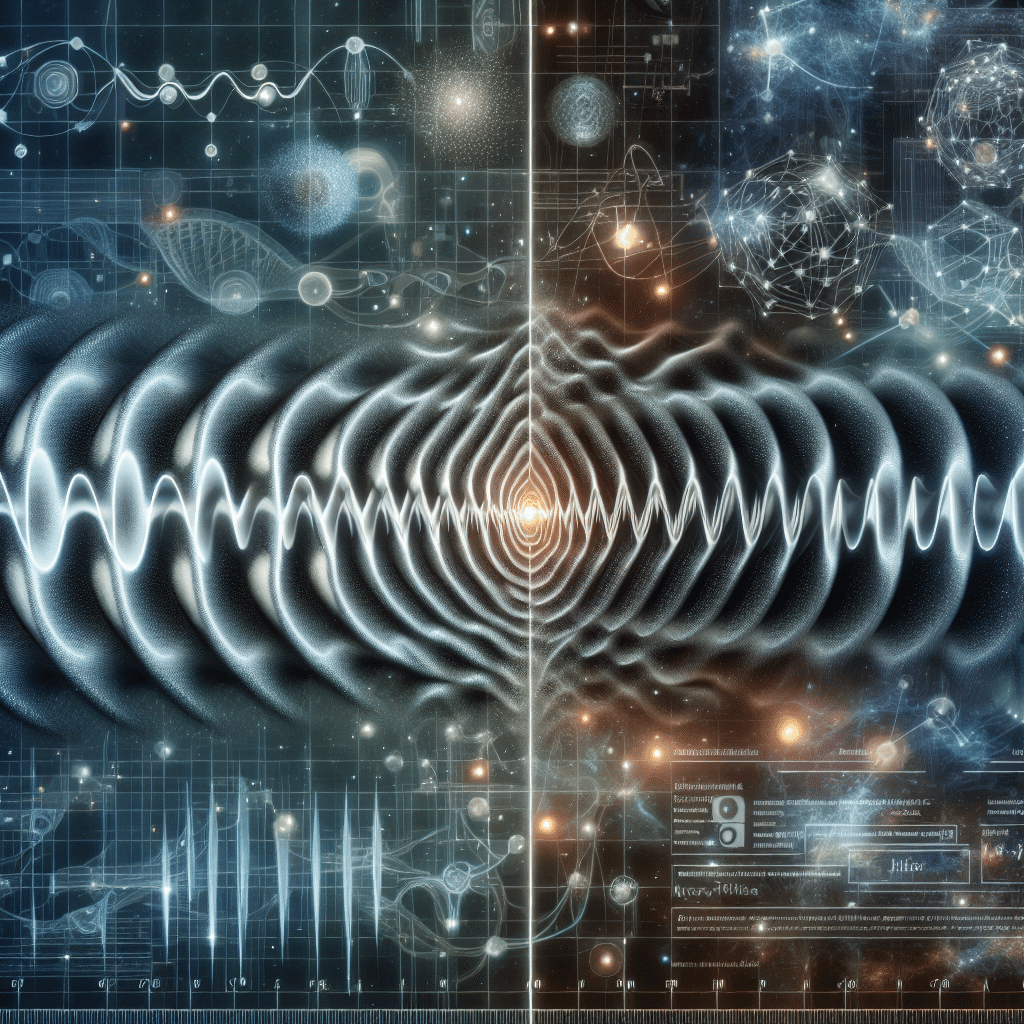Exploring the wave nature of charge interactions in quantum electrodynamics and beyond
Abstract
The Coulomb force—long understood as a fundamental electromagnetic interaction between charges—can be reinterpreted through the lens of wave interference. This article explores how the interaction between positrons and electrons, when modeled as stable, spatially distributed wavefunctions, leads naturally to attraction or repulsion through constructive or destructive interference. Building on the foundational principles of wave-particle duality, quantum electrodynamics (QED), and the implications of de Broglie’s matter waves, this work develops a framework where the strength and nature of electromagnetic interactions emerge from the geometry, phase, and overlap of the wavefunctions themselves. By incorporating the mean spatial diameter of these wavefunctions and grounding the theory in both classical and modern experiments, including positron annihilation and time-domain diffraction, this approach bridges quantum field theory and real-space wave behavior. Applications range from medical imaging to quantum technologies, while also offering insight into theoretical frontiers such as gauge theories and non-local interactions.
Exploring the wave nature of charge interactions in quantum electrodynamics and beyond
Abstract
The Coulomb force—long understood as a fundamental electromagnetic interaction between charges—can be reinterpreted through the lens of wave interference. This article explores how the interaction between positrons and electrons, when modeled as stable, spatially distributed wavefunctions, leads naturally to attraction or repulsion through constructive or destructive interference. Building on the foundational principles of wave-particle duality, quantum electrodynamics (QED), and the implications of de Broglie’s matter waves, this work develops a framework where the strength and nature of electromagnetic interactions emerge from the geometry, phase, and overlap of the wavefunctions themselves. By incorporating the mean spatial diameter of these wavefunctions and grounding the theory in both classical and modern experiments, including positron annihilation and time-domain diffraction, this approach bridges quantum field theory and real-space wave behavior. Applications range from medical imaging to quantum technologies, while also offering insight into theoretical frontiers such as gauge theories and non-local interactions.
1. Introduction: From Force Laws to Wave Patterns
The classical formulation of Coulomb’s law describes the interaction between two point charges as a force inversely proportional to the square of their separation. While incredibly successful, this model remains essentially geometric and static, masking the dynamical nature of the quantum world.
With the advent of quantum mechanics, it became clear that particles like electrons and positrons cannot be fully described as point-like entities. Instead, they exhibit wave-like properties, with spatially extended probability distributions that evolve in time. This opens a new avenue for interpreting forces not as instantaneous actions at a distance, but as emergent phenomena from wave interference.
In this article, we explore how the Coulomb interaction—attractive or repulsive—can be seen as a natural outcome of the superposition of charged particle wavefunctions, focusing particularly on the electron–positron system.
2. Historical Background: The Foundations of Wave-Particle Duality
The conceptual seeds of this approach were planted with the double-slit experiment, first with light and later with electrons. In the 1920s, Louis de Broglie proposed that all matter possesses an associated wavelength:
\[ \lambda = \frac{h}{p} \]where \( h \) is Planck’s constant and \( p \) is the particle’s momentum. This insight laid the foundation for quantum wave mechanics, later formalized in Schrödinger’s equation and expanded through quantum field theory.
Yet the core idea remained: particles have real, spatially extended wavefunctions, which can interfere. This interference is not merely a mathematical abstraction—it is physically observable, and, as we argue here, it drives fundamental interactions.


3. Wavefunctions as Physical Entities
Let us consider an electron and a positron not as point particles, but as localized, stable wave packets. Each is described by a wavefunction \(\psi(\mathbf{r}, t)\), with a probabilistic interpretation:
\[ |\psi(\mathbf{r}, t)|^2 = \text{Probability density of finding the particle at position } \mathbf{r} \]But beyond probability, if these wavefunctions are real, modulating fields (as posited in interpretations like de Broglie–Bohm theory or emerging wave-based theories like BeeTheory), then their superposition has physical consequences.
4. Constructive vs Destructive Interference: The Mechanism of Charge Interaction
We propose that Coulomb forces emerge from the local energy gradients created by the interference of two wavefunctions:
- Opposite charges (electron–positron): Wavefunctions with opposite phase interfere constructively when overlapping, leading to a lowering of local field energy and an attractive force.
- Like charges (electron–electron or positron–positron): Wavefunctions with in-phase structure interfere destructively, increasing local field energy and producing a repulsive force.
In both cases, the force emerges from the system’s tendency to minimize the total wave energy, given by:
\[ \mathcal{E}_{\text{tot}}(\mathbf{r}) \propto |\psi_1(\mathbf{r}) + \psi_2(\mathbf{r})|^2 \]This is conceptually analogous to Coulomb’s law but grounded in real-space wave interference rather than point charges and virtual particles.
5. Mean Diameter D: Geometry of Wavefunction Overlap
To quantify when interference becomes significant, we introduce the mean spatial diameter \(D\) of a particle’s wavefunction:
\[ D = 2 \sqrt{\langle r^2 \rangle – \langle r \rangle^2} \]This parameter represents the effective size of the wave packet and defines the range of meaningful interaction. Two wavefunctions begin to interact non-trivially when their separation is on the order of \(D\) or less.
- At separations > D: Overlap and interference are negligible; the force vanishes.
- At separations ≤ D: Significant interference arises; attraction or repulsion emerges from wave dynamics.
This spatial picture provides a physical basis for the inverse-square law and introduces a smooth transition from negligible to strong interaction—unlike the sharp cutoff in point-particle models.
6. From Feynman Diagrams to Field Modulation
In quantum electrodynamics (QED), interactions between charged particles are depicted through Feynman diagrams, where virtual photons mediate forces. While computationally powerful, this approach does not offer a direct physical intuition for how these forces arise in space.
The wave-based view instead interprets these forces as arising from modulations of an underlying field due to interfering wavefunctions. This does not contradict QED but complements it, providing a spatially continuous description of how particles “feel” each other’s presence.
Moreover, it opens a path toward unifying electromagnetic and gravitational interactions under a shared wave framework, as envisioned by BeeTheory and other wave-substrate models.
7. Experimental Support and Technological Applications
This interpretation is not speculative—it is anchored in experimental results:
- Electron double-slit experiments (1950s–present): Confirmed that single electrons can interfere with themselves, proving the reality of their wavefunction.
- Time-domain diffraction at optical frequencies (Nature Physics, 2023): Showed that interference patterns can be generated in time, indicating that wave structure and observation are deeply intertwined.
- Positron annihilation spectroscopy (PES): Relies on the spatial overlap of electron and positron wavefunctions, again highlighting that interference governs observable outcomes.
These findings have led to practical technologies:
- PET/MRI systems in medical imaging, where positron-electron interactions provide high-resolution functional information.
- Quantum wave-based sensors for detecting electromagnetic fields through localized phase shifts.
- Wave energy conversion systems, which mirror some of the principles of interference and energy extraction in physical wave media.

8. Theoretical Implications: Non-Locality, Measurement, and Gauge Fields
A wave-based interpretation forces us to confront foundational questions:
- Is the wavefunction a real field or just a probability tool?
- How do phase relationships between particles affect long-range interactions?
- Can this approach be extended to Non-Abelian gauge theories, where the mediators (like gluons or W/Z bosons) themselves carry charge?
By treating wavefunctions as physically real, non-locality becomes a built-in property of the field structure, not a paradox. Measurement is not a collapse but an interference-driven localization of the wavefunction. And force carriers may be reinterpreted as modulations in phase-coherent backgrounds.
9. Reframing Charge and Force through Interference
This wave-based interpretation of Coulomb forces through positron–electron interference reframes our understanding of charge, interaction, and space itself. Rather than treating force as the abstract exchange of invisible particles, it becomes the real-space consequence of wave behavior, phase structure, and spatial overlap.
By integrating quantum mechanics, QED, and a real-field ontology, this framework opens new paths for both theoretical unification and technological innovation. It invites us to think of forces as phenomena of coherence, not just geometry—of interference, not just exchange.
Acknowledgements
The author acknowledges discussions and inspiration from wave-based physics communities, as well as the foundational work of de Broglie, Schrödinger, and Feynman. Special thanks to recent developments in positron imaging, wave energy systems, and experimental quantum optics that bring these ideas from theory to practice.
